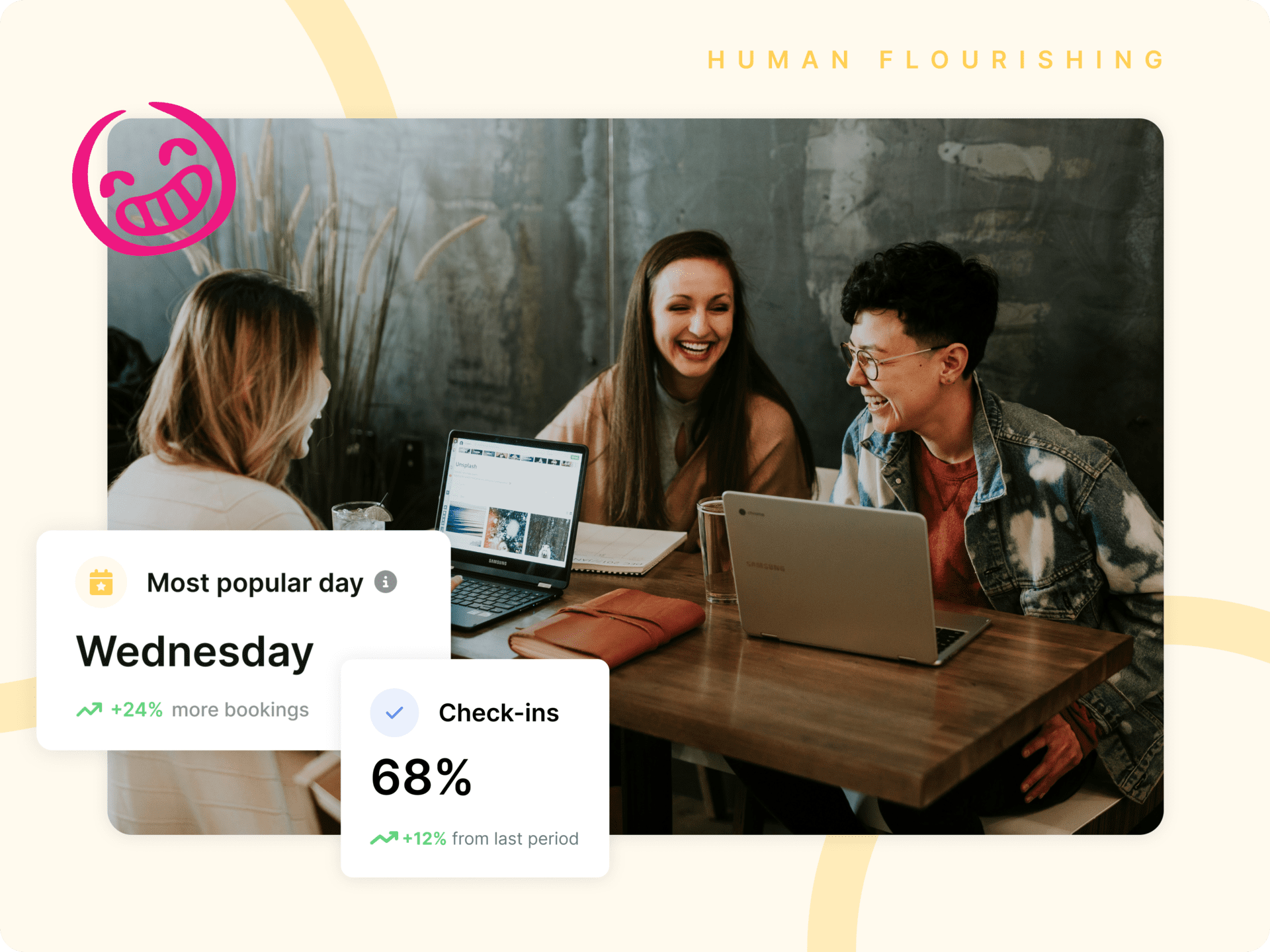Hybrid Persona #2: The Adapter

If you’re responsible for your organization’s transition to hybrid working, understanding the different hybrid workplace personas you need to cater for will help you implement the systems, spaces and tech to keep them happy and engaged. In the first instalment of our hybrid workplace persona series, we looked at the Soloist. Happiest working alone and on their own terms, keeping them engaged in your workplace culture can be the biggest challenge.
Next up, we have the Adapter. A different beast to the Soloist, they are more adaptable to change in the workplace. They’re looking for a dynamic and flexible working environment that helps unlock their potential.
Adapters: your most tech-savvy, dynamic employees
If Charles Darwin were alive today, we like to think he’d find a special connection with the Adapter. As the name suggests, they’re the most adaptable creatures in your office, always striving for optimum working conditions that help them thrive.
With no single preferred habitat, they roam the hybrid savanna, hunting for the best meeting room, the quietest co-working space, or the liveliest office social area. Unlike the Soloist, their working style isn’t set to one mode. They’re happy to adapt if it means more effective working. The true Darwinians of the hybrid workplace.
Tech savvy, they expect to have access to the tools that give them flexibility and the ability to adapt to wherever they’re working. They were probably storing files in the cloud when the rest of us were carrying around CD-ROMs – maybe even floppy disks. They were the first to get a Blackberry, and the first to ditch it for an iPhone.
They recognize that different types of work are performed best in different working environments. Collaboration requires face-to-face time. Focused work needs somewhere distractions are kept to a minimum – possibly at home, or in a quiet corner of the office. Relationship building works best in a social space that encourages impromptu conversations and connections.
Catering for Adapters
Adapters are naturally dynamic and full of potential, but to get the most from them you need to provide the right tools and amenities for them to adapt to change. They thrive when given options – the flexibility to choose different working environments as it suits them.
Collaborating and socializing in-person are two facets of office life they’ll likely value and will have missed during the pandemic. They’ll see the limitations of connecting on Zoom or MS Teams and expect the opportunity to meet face-to-face with colleagues. But they’ll also want the freedom to work remotely when they want to.
Here are three ways to keep your Adapters happy.
1. Implement room and desk booking software
Your Adapters will probably have a clear idea of the desk they work best at. Hot desking will seem like a nightmare to them.
- What if I can’t get the desk I want?
- What if I get stuck next to the water cooler and I can’t get anything done?
- What if I can’t get a desk at all and my trip to the office is a complete waste of time?
Questions like these will weigh heavily on the Adapter’s mind. To that end, an intuitive desk scheduling system will be high on their hybrid workplace wishlist. The ability to choose which desk they sit at and easily book it in advance – whether as a one-off or as a regular booking – will be important. They’ll also value the option to book a suitable desk on the fly, and expect to be able to fire up an app, see what’s available, and book quickly and easily. When they get to the office, the app should direct them to their desk if it’s one they’ve not used before.
And the same goes for booking meeting space. Knowing what’s available and being able to easily book it ahead of time, even better if it can be done all in one go within their calendar, allows them to plan their trip to the office and get the most out of the time they spend there.
2. Build variety and options into your space planning
To keep Adapters happy, configure your workspaces to suit a variety of activities: meeting and collaboration space, quiet zones and social hub areas.
Data from desk hoteling and room booking software will give you insight into what the best configuration looks like. You’ll be able to see how people are using your spaces and configure them based on actual and forecast usage data. Which desks are most popular? What size meeting rooms are used most often? Are some areas of the office always oversubscribed or neglected?
Consider building variety and options into your meeting space planning too. Traditional meeting rooms are important, but so is space for impromptu meetings where people can gather for unplanned, informal discussions. You need somewhere that’s relaxed but still suitable for a work meeting, or to use as a casual touch-down area for a quick phone recharge and email check before the next meeting.
3. Provide up-to-date meeting technology
To make the most of collaboration time, Adapters will want inclusive hybrid meeting experiences.
High quality video and audio will make meetings immersive, help put remote attendees on an equal footing, and minimize the tech hiccups that can sabotage virtual meetings. Audio visual devices like the Neat Bar can transform existing meeting rooms without requiring an expensive refit.
Embracing meeting collaboration tools, such as virtual whiteboards, will give your Adapters the seamless transition they need between in-person meetings and remote work. They’ll be able to throw ideas around with teammates in a meeting room and then head back to their home office knowing they’ll have full access to the meeting notes when they get there.
Help your Adapters to embrace workplace change
Adapters have high standards. They want to thrive and they’re happy to adapt to change in the workplace, to flex their working style and location to suit the task at hand. You’re missing a trick if you don’t provide them with a variety of workspaces and the tools they need to fulfill their potential.
They’ll be happy working remotely in a hybrid workplace setup, but they’ll want to come into the office to get the benefits of face-to-face collaboration and socializing with colleagues. Keep them content by smoothing the transition between their different work modes, from providing an intuitive way to book desks and meeting space to data-driven workplace configurations.



